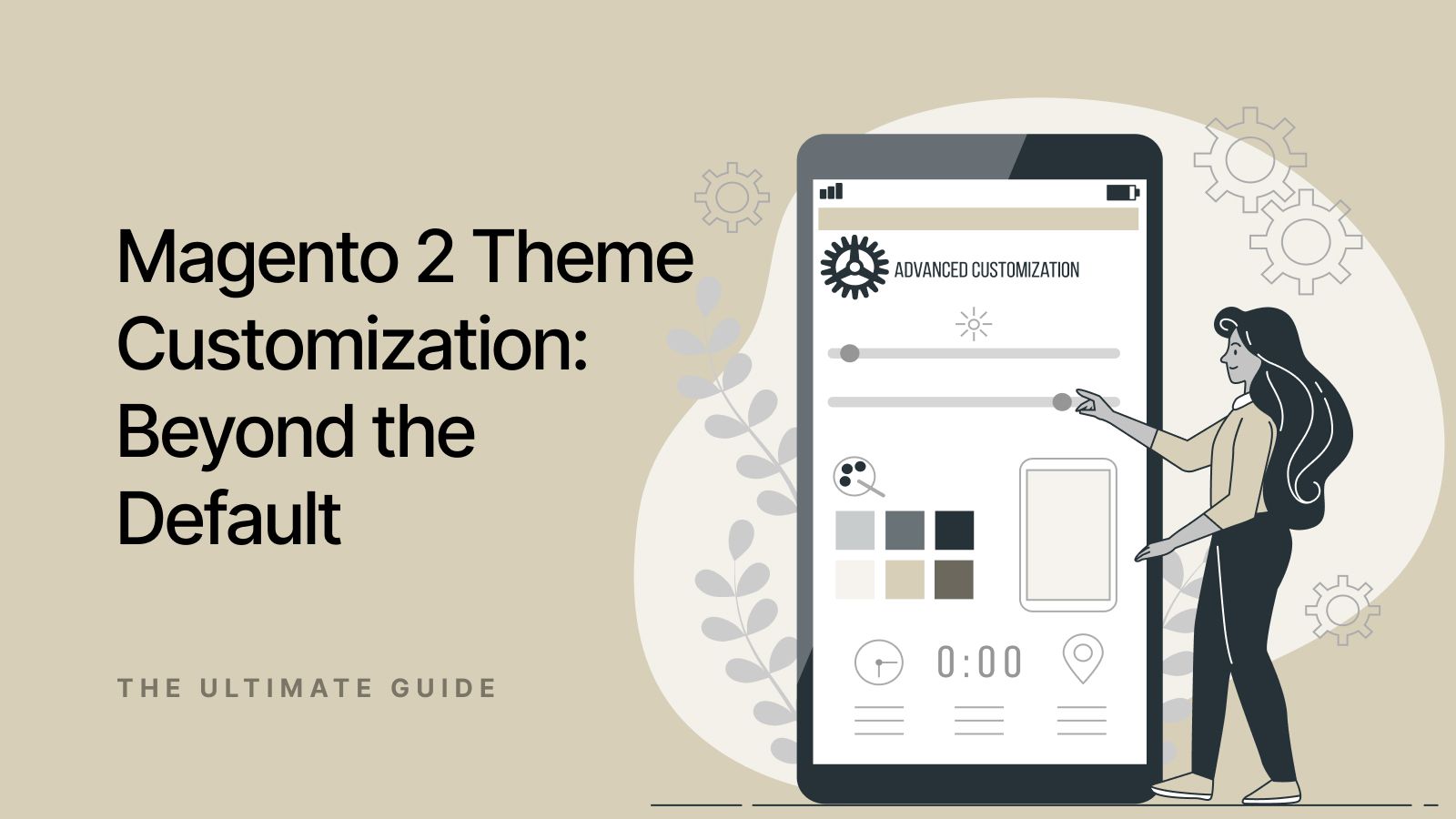Magento 2 comes with clean, ready-to-use default themes. They are fine for testing or launching a small store, but once you step into real business, the limitations become obvious. Customers expect recognition, brand personality, and a smooth shopping experience that sets your store apart from hundreds of others.
According to Baymard Institute, the average cart abandonment rate in eCommerce is over 70%. One of the reasons is poor interface design and weak visual focus on key actions. That’s why many companies turn to Magento 2 development services to transform a default theme into a sales tool.
What customization brings
Visual identity
Shoppers should recognize your brand within seconds. Colors, fonts, and layout all build trust. Imagine walking into a luxury boutique where the signage is written in Comic Sans. The products may be the same, but the impression is ruined.
Usability and speed
Google research shows that the probability of bounce increases by 32% if a page takes more than 3 seconds to load (Think with Google). Customizing a theme allows you to optimize images, remove unnecessary scripts, and make the site faster.
Functional blocks
A less obvious example: adding a shipping cost calculator directly on the product page. This reduces abandoned carts because customers see the final cost upfront.
Accessibility and inclusivity
Accessibility is often overlooked. Yet, according to WHO, over 1 billion people live with some form of disability. A customized Magento theme can include larger font options, better contrast, and keyboard navigation—features that not only help users with impairments but also improve usability for everyone.
Levels of customization
Minimal changes
- Logo replacement
- Adjusting color palette
- Choosing new fonts
This is a quick way to move away from the “template” look, though it won’t deliver deep uniqueness.
Flexible adjustments
- Redesigning navigation menus
- Adding custom widgets
- Optimizing product cards
This approach takes more time but delivers a noticeable difference.
Full redesign
As a business grows, standard solutions may no longer fit. A fully custom theme built from scratch gives the store its own interface “language.” It’s more expensive, but the result is a truly unique experience.
Real-world examples
- Electronics store: added an interactive comparison block inside product pages. Average session time increased by 18%.
- Fashion boutique: introduced dynamic accessory suggestions for each product. Upsell conversion rose by 12%.
- Online pharmacy: implemented a symptom-based search tool, reducing call center load.
- Sports retailer: integrated a “find your size” quiz. Returns dropped by 9%, saving logistics costs.
Current trends in Magento 2 theme customization
Hyvä themes
Hyvä has become a popular alternative to Magento’s default Luma frontend. Stores switching to Hyvä report up to 50% faster page loads and 15–30% higher conversion rates (Meetanshi, 2025).
Personalization
AI-driven product recommendations and personalized landing pages are no longer “nice-to-haves.” They are expected. A custom theme can integrate these features seamlessly.
Mobile-first design
Over 60% of purchases happen on smartphones (Statista). A theme that looks good on desktop but clumsy on mobile is a liability.
Seasonal adaptability
Brands increasingly demand themes that can be quickly adapted for campaigns—Black Friday, Valentine’s Day, or regional holidays. Customization makes it possible to switch banners, layouts, and even color schemes without breaking the site.
Mistakes to avoid
- Copying competitors blindly. Even if their design looks great, it may not fit your audience.
- Overloading with effects. Animations and pop-ups may impress designers, not buyers.
- Ignoring mobile users. Mobile-first is not optional anymore.
- Forgetting about SEO. A beautiful theme with poor markup will struggle to rank.
Measuring the impact
Customization for the sake of beauty is a weak strategy. Track:
- page load speed;
- pages per session;
- purchase conversion rate;
- repeat visits;
- return rate after campaigns.
Sometimes moving the “Buy” button to a more visible spot is enough to lift results.
Step-by-step approach to Magento 2 theme customization
- Audit the current theme: measure speed, usability, and conversion.
- Define goals: faster checkout, stronger branding, or higher upsells.
- Choose the right base: Luma, Hyvä, or a child theme.
- Design wireframes: focus on user flow, not just visuals.
- Develop and test: implement changes in a staging environment.
- Measure again: compare KPIs before and after.
- Iterate: customization is never “done”; it evolves with the business.
Conclusion
Magento 2 provides a solid foundation, but turning the default theme into something unique is an investment in brand recognition and sales. Customization helps you stand out, speed up the site, and make it more convenient for customers.
If the default theme is like an off-the-rack suit, customization is tailoring it to fit perfectly. The difference is felt immediately.
